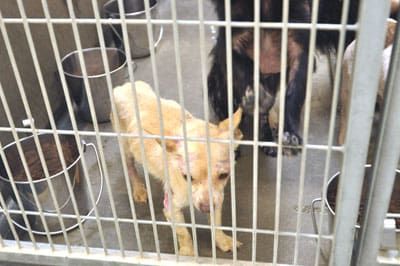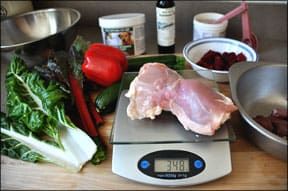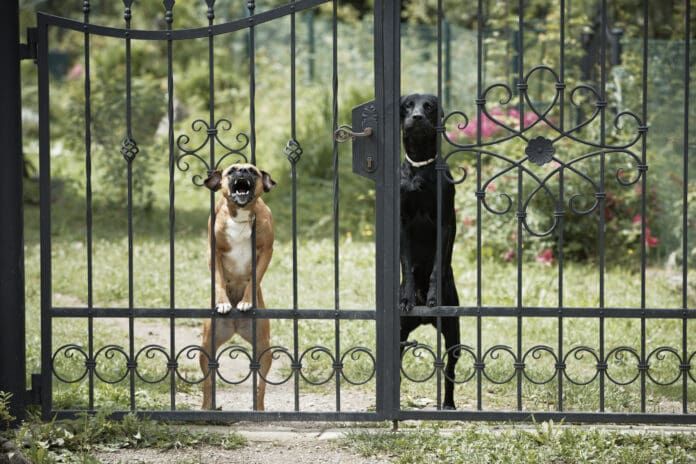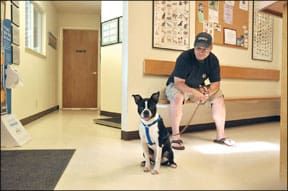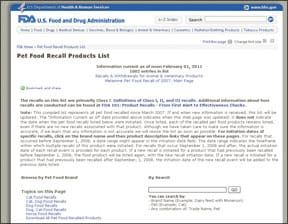There are almost as many opinions among veterinarians concerning the use of corticosteroids as there are veterinarians. Some feel that these drugs – prednisone, prednisolone, methylprednisolone, and dexamethasone foremost among them – are invaluable to every dog who itches; some feel that corticosteroids ought to be used only as a last resort, and only for short periods and in small amounts. Still others regard them as verboten. Why are these drugs so controversial?
Corticosteroids, also known as glucocorticoids, are used mainly for their anti-inflammatory and immunosuppressive effects. They have been modeled on the substances manufactured by the adrenal cortex, and can be administered in an injectable, oral, or topical form. These are powerful drugs that exert amazing effects on pruritic dogs – sometimes overwhelmingly positive, and sometimes negative. They can halt inflammation and itchiness within just a day or two.
However, due to their immunosuppressive action (which is responsible for quieting the hypersensitive response of the immune system), they can also leave a dog vulnerable to infections and can cause a host of other metabolic imbalances. “This is especially problematic in allergic patients, as their immune systems tend to already be weak,” says Dr. Lisa Pesch, a holistic veterinarian and owner of Animal Arts Healing Center in Sebastopol, California. “It’s important not to confuse a hypersensitive immune system with a strong one.”
Corticosteroids also affect water and electrolyte balance (making many dogs excessively thirsty, and thus, excessively in need of “going outside”); they can cause extracellular fluid retention (some dogs will take on a puffy appearance); and they often increase the dog’s appetite (and without owner awareness of the potential for problems, resultant gain of unhealthy pounds).
Most seriously, long-term use of these drugs can lead to increased incidence of infections due to immune suppression, liver disease, hair loss, skin problems, diabetes mellitus, and adrenal suppression. Every other day usage can help to minimize these effects.
Some veterinarians take a laissez faire stance on steroids, and prescribe them freely in cases of severe allergy. Others prescribe the drugs minimally.
Still others base their decision on their appraisal of the owner; faced with owners who fail to understand or embrace an intensive, multi-pronged treatment and management plan for their itchy dog, they will prescribe the drugs in order to stop the dog’s itching and increase his quality of life, at least in the short term. But given a motivated, educated owner who is willing to go to any lengths to help their dog get better, these vets will recommend a minimal reliance on steroids, and work with the owners to find alternatives.
In her web-based consulting practice, veterinary internal medicine specialist Dr. Donna Spector offers second opinions, analysis, and oversight to pet owners and their veterinarians. When she’s consulted on a case of a dog with allergies, she bases her assessment on the ‘three strikes and you’re out’ rule. “If you’ve had your dog in the vet’s office three or four times, and you’ve come home with the same packet of antibiotics and steroids each time, and no other suggestions have been made regarding better environmental management or immunotherapy – to me, there is more we can do.”
It makes sense to regard these drugs as “heavy artillery,” even if your own veterinarian is casual about prescribing them on an initial visit. Ideally, veterinarians would advise using them as a last resort and just for a short time (two weeks or so), to help halt the itch/scratch cycle plaguing a severely pruritic dog. This, in turn, can give his skin time to heal, and other therapies time to begin working.


